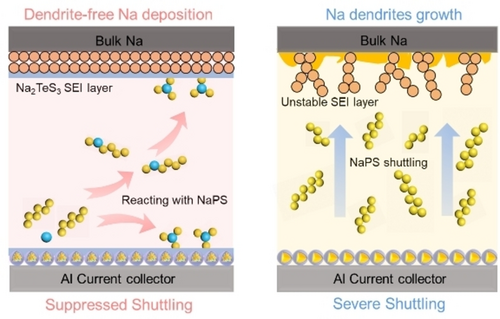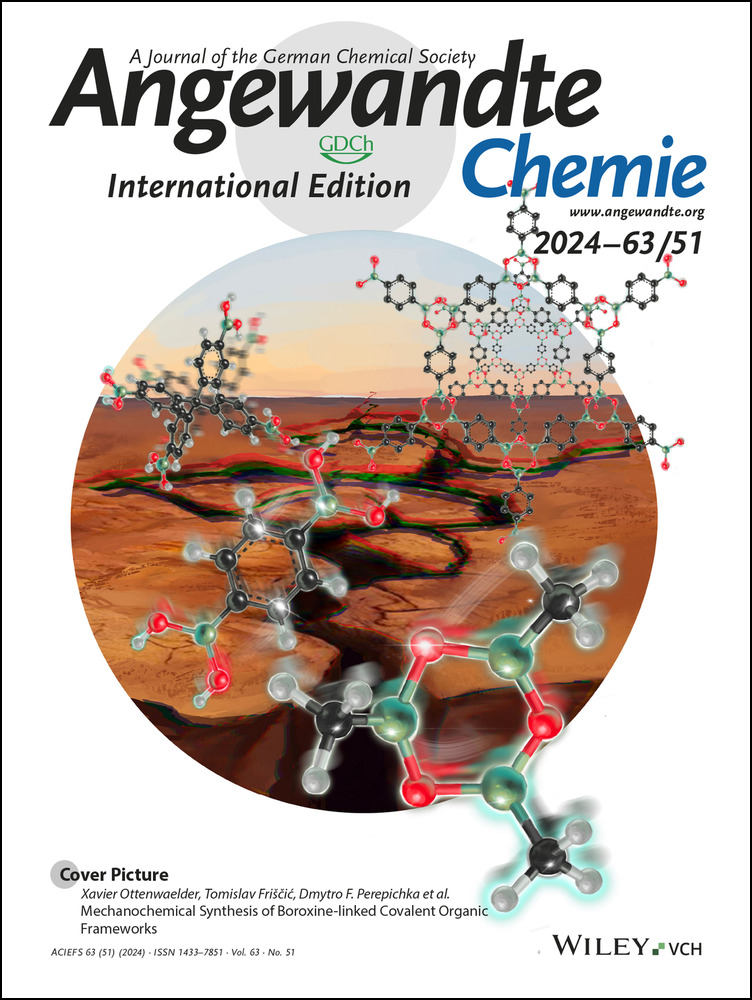Stable Dendrite-Free Room Temperature Sodium-Sulfur Batteries Enabled by a Novel Sodium Thiotellurate Interface
Graphical Abstract
Novel sodium thiotellurate (Na2TeS3) interfaces are constructed both on the cathode and anode for Na−S batteries to simultaneously address the Na dendritic growth and polysulfide shuttling. Benefiting from this rational design, an anode-free cell fabricated with the Na2S/Na2Te@C cathode delivers an ultrahigh initial discharge capacity of 634 mAh g−1 at 0.1 C under practically necessary conditions, which could pave a new path to design high-performance cathodes for anode-free RT Na−S batteries.
Abstract
The practical application of room-temperature sodium-sulfur (RT Na−S) batteries is severely hindered by inhomogeneous sodium deposition and notorious sodium polysulfides (NaPSs) shuttling. Herein, novel sodium thiotellurate (Na2TeS3) interfaces are constructed both on the cathode and anode for Na−S batteries to simultaneously address the Na dendritic growth and polysulfides shuttling. On the cathode side, a heterostructural sodium sulfide/sodium telluride embedded in a carbon matrix (Na2S/Na2Te@C) is rationally designed through a facile carbothermal reaction, where the Na2TeS3 interface will be in situ chemically obtained. Such an interface provides abundant electron/ion diffusion channels and ensures rich catalytic surfaces toward Na−S redox, which could significantly improve the utilization of active material and alleviate polysulfides shuttling in the cathode. On the anode side, the inevitable formation of soluble polytellurosulfides species will migrate on Na anode surface, finally constructing a compact and smooth solid-electrolyte Na2TeS3 interphase (SEI) layer. Such electrochemical formed Na2TeS3 interface can significantly enhance ionic transport and stabilize Na deposition, thus realizing dendrite-free Na-metal plating/stripping. Benefitting from these advantages, an anode-free cell fabricated with the Na2S/Na2Te@C cathode exhibits an ultrahigh initial discharge capacity of 634 mAh g−1 at 0.1 C, which could pave a new path to design high-performance cathodes for anode-free RT Na−S batteries.
Conflict of Interests
The authors declare no conflict of interest.
Open Research
Data Availability Statement
The data that support the findings of this study are available from the corresponding author upon reasonable request.





